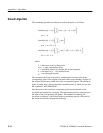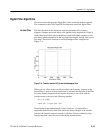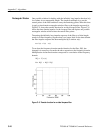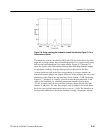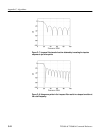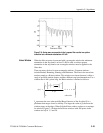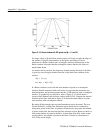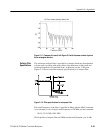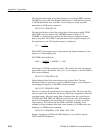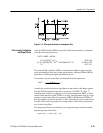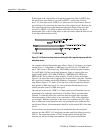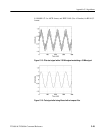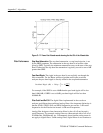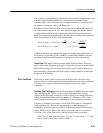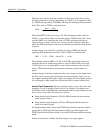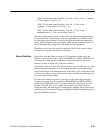
Appendix C: Algorithms
C–26
TVS600 & TVS600A Command Reference
The stop band attenuation or stop band rejection is set with the SREJ command.
The SREJ is given in dB. The minimum attenuation is 15 dB and the maximum
is 100 dB (the default value is 60 dB). As an example, to set the stop band
attenuation to 40 dB use the command:
CALC1:FILT:FREQ:SREJ 40
The final specification of the filter is the relative filter transition width, TWID.
The TWID is directly related to the TWIDHZ depicted in Figure C–12.
TWIDHZ is a measure of how quickly the filter response changes from pass
band to stop band. The TWID is specified relative to the Nyquist frequency for
the acquisition record. The Nyquist frequency is defined as:
F
NYQ
+
1
2 @ TINT
Where TINT is the sample interval. Equivalently, the Nyquist frequency is also
equal to 1/2 of the sampling rate.
The TWID is then defined as:
TWID +
TWIDHZ
F
NYQ
+ TWIDHZ @ 2 @ TINT
Valid ranges for TWID are between 0 and 1. The smaller the value, the narrower
the transition region. The default value is 0.1. As an example, to set the TWID to
0.05 use the command:
CALC1:FILT:FREQ:TWID 0.05
Define highpass filter in the same manner as the lowpass filter. The only
difference is that it is necessary to specify a HPAS frequency. As an example, to
set the highpass frequency to 100 MHz, use the command:
CALC1:FILT:FREQ:HPAS 100E6
Figure C–13 depicts the specifications for a band pass filter. The same specifica-
tions are used for the notch filter, but the two filters have swapped pass band and
stop band regions. Like the lowpass filter, a bandpass filter has a specification
for SREJ and TWID. SREJ and TWID are equal on both sides of the bandpass
region. For the bandpass and notch filters it is necessary to specify a start and
stop frequency. This is done with the STAR and STOP commands. As an
example to set up a bandpass filter with a start frequency of 50 MHz and a stop
frequency of 75 MHz use the command:
CALC1:FILT:FREQ:BPAS; STAR 50E6; STOP 75E6
Instead of specifying a STAR and STOP frequency, it is possible to specify
CENT and SPAN frequencies.



